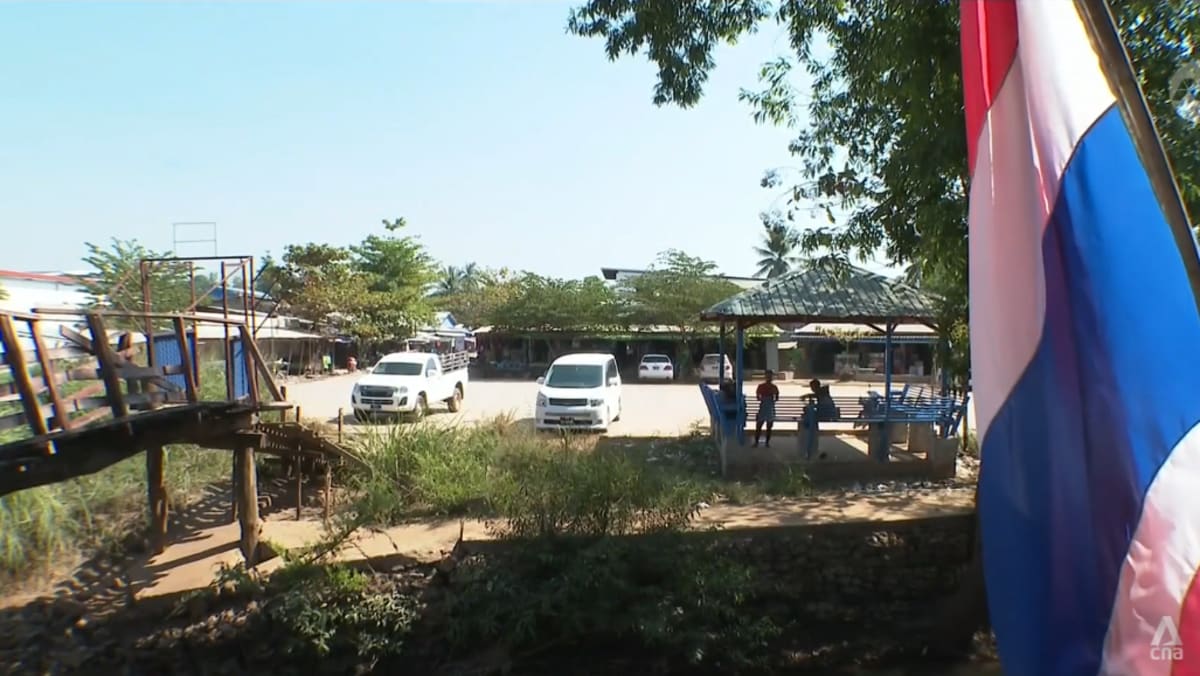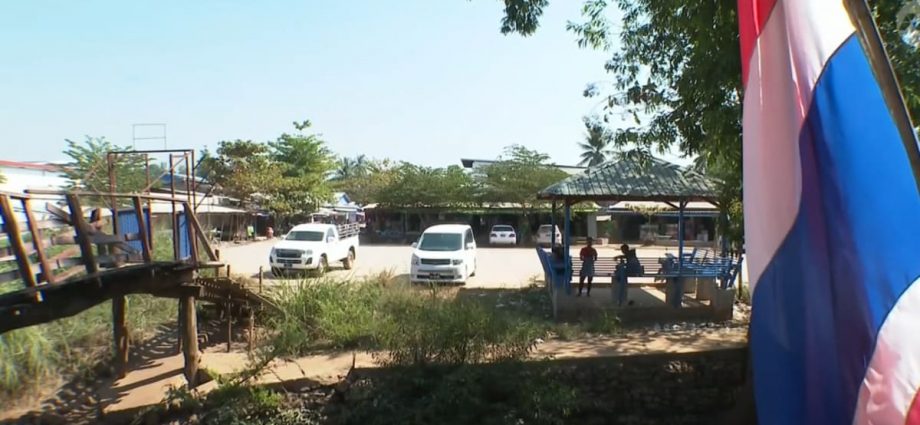
“That day, the fighting alone was already scaring the children. And then that plane was flying low … It was chaotic,” said Mr Chatchawan Srisuwan, Wale’s village chief.
He added he “wouldn’t have dreamt” that Myanmar’s unrest would escalate to a point where its military would invade Thai airspace.
“Everyone was panicking and calling me, asking if that jet was Thai or theirs (Myanmar’s), because it was flying above us twice and then at the third time, it was firing,” Mr Chatchawan said.
DIRECT NEIGHBOURS
Wale, situated in the western Thai province of Tak, is about six hours away from the capital Bangkok by car.
The village is home to fewer than 700 residents who share a friendly relationship with the neighbouring town of Waw Lay in Myanmar, just a short walk across the border.
Before COVID-19, villagers from the two sides often traded with each other but since the pandemic, the border has been officially closed.
Unofficially, it is still easy for the neighbours to cross the invisible boundary line – the border is not marked by walls or barbed wires – to trade or meet each other.
Since Myanmar’s coup, residents on the Thai side have been watching closely, but uneasily, at the increasingly alarming situation unfolding across the border.
Mr Chatchawan said that while gunfire has occasionally been heard since the unrest began in Myanmar, no one had expected things to escalate.
While no one was injured in the fighter jet incident – only a car was damaged in the ensuing chaos – it left the villagers confused and angry.
DIPLOMATIC RELATIONSHIP
Thailand’s Prime Minister Prayut Chan-o-cha dismissed the incident as “not a big deal” and said that both sides had quickly resolved the issue.
“(Myanmar has) admitted that they crossed (into Thai airspace), but that wasn’t their intention. They were making a turn and veered into Thailand a little bit. We scrambled our aircraft to warn them as standard operating procedure,” said Prayut.

